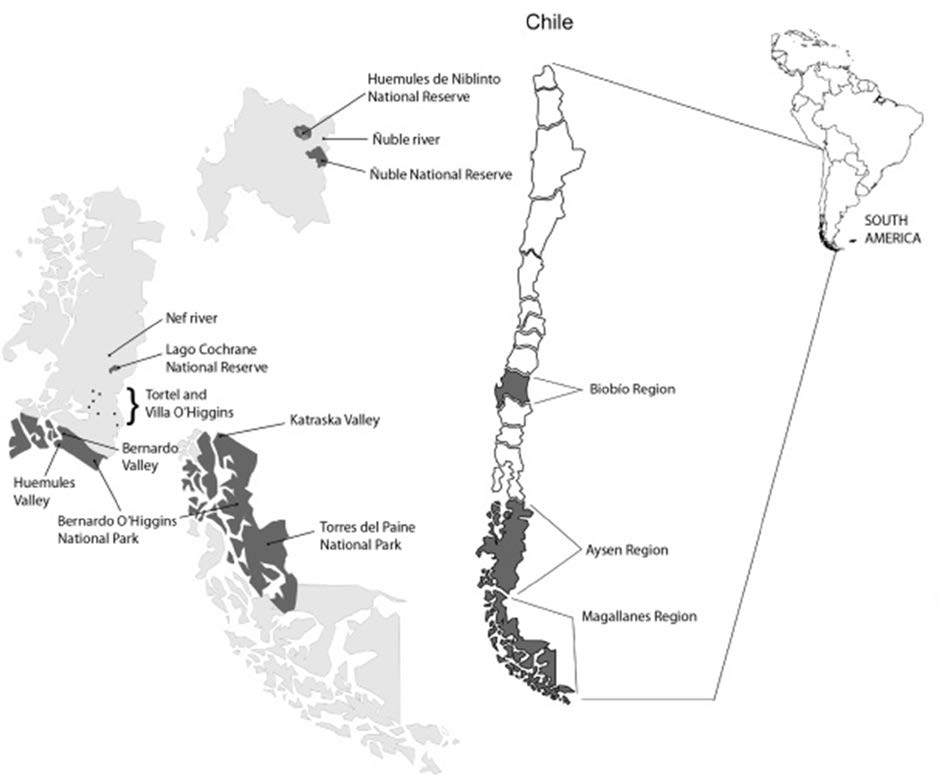Diagnosis of parasites in huemul (Hippocamelus bisulcus) feces from south and central Chile
Diagnóstico de parásitos en heces del huemul (Hippocamelus bisulcus) en el centro y sur de Chile

Show authors biography
Objective. Identify parasites in huemul (Hippocamelus bisulcus) feces from natural protected areas of south–central Chile and evaluate differences in parasite prevalence between regions and seasons. Materials and methods. 200 fecal samples from huemul were collected during all seasons of the year from different localities of the Ñuble, Aysén and Magallanes regions between years 2006 and 2008. Samples were analyzed using flotation and sedimentation techniques and further observed with the microscope in order to detect parasites. Additionally, 124 samples were analyzed to determine the presence of Fasciola hepatica. Results. The 38.0% (n=76/200) of samples were positive to at least one parasite form, evidencing a prevalence of 11.8% (n=2/17) in Ñuble, 22.8% (n=28/123) in Aysén and a 76.7% (n=46/60) in Magallanes. Moniezia sp. eggs were found in the Ñuble region, meanwhile, Strongyle-type eggs, Nematodirus sp. eggs and Eimeria spp. oocysts were found in the Aysén and Magallanes regions. There was no evidence of F. hepatica during sample examination. Differences in parasitism were detected between seasons in Aysén and Magallanes (p≤0.05). Conclusions. Aysén and Magallanes regions showed a relatively higher prevalence and diversity of parasites than the Ñuble region. This could be related to differences in density of huemul populations and livestock in each region. Further parasitological surveys in huemul populations from central and southern Chile should be performed in the future. Studies involving the relationship between the huemul and livestock and the potential inter- and intraspecific transmission of parasites are also required.
Article visits 1841 | PDF visits























